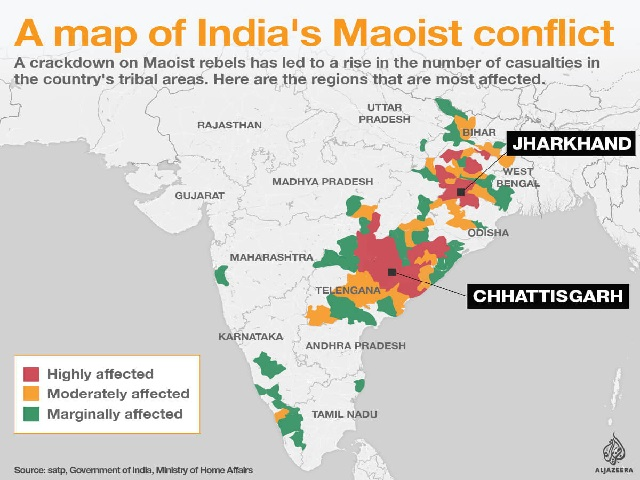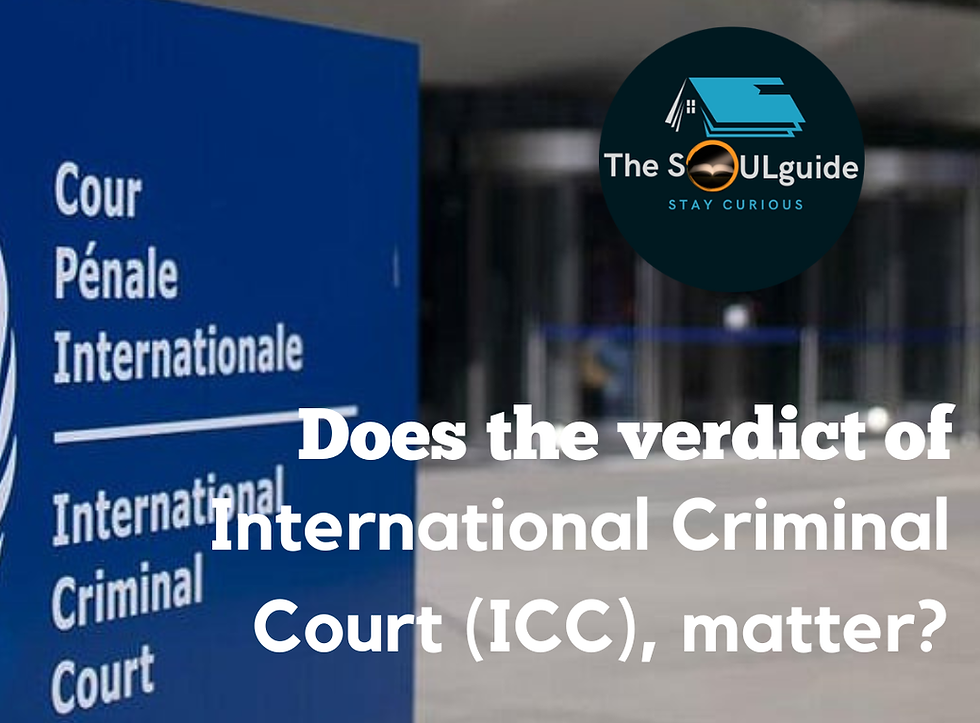Maoism in India and its causes and counter measures.
- TheSoulGuide

- Sep 22, 2022
- 4 min read
Updated: Oct 14, 2022
Left wing extremism as an ideology emerged from Karl Marx, to go back bit in history when the Industrial revolution began and a huge gap emerged in rich and poor(proletariat) class is when the Marx thought to unite the workers and laborer's against the capitalist section of the society or the exploiters as he said. His ideology was that the proletariat must unite and rise against the bourgeoisie and establish their own state which is classless and everything is distributed equally as per the need.
Later, Validimir Lenin in Russia took this forwards and popularized it in Russian Revolution which overthrew the Czar and established the Communists government. Similarly the Chinese Revolution in china by Mao Zedong, from here the word Maoism emerged popularly known as naxalism in India (from a village called Naxalbari in West Bengal) as a peasant revolt took place against local landlords who had beaten up a peasant over a land dispute in 1967.
Initially, the Naxalite movement originated in West Bengal and had later moved to the less developed rural areas in Southern and Eastern India, including in the states of Chhattisgarh, Odisha, Andhra Pradesh, and Telangana.
Some Naxalite groups have legal organisations as representatives in the parliament like the Communist Party of India (Marxist-Leninist) Liberation and the Communist Party of India (Marxist-Leninist) Janashakti.
As of now, the states where Naxalites are most visible are Andhra Pradesh, Bihar, Chhattisgarh, Jharkhand, Maharashtra, Odisha and Telangana.

It's advent in India.
Origins of Left Wing Extremism (LWE) in India goes back to Telangana peasant rebellion (1946-51), the movement was at its peak in 1967, when the peasants, landless laborer's, and Adivasis raided the granaries of a landlord in the Naxalbari village in West Bengal.
It was suppressed by the police force, which consequently led to the Naxalite movement under the leadership of Charu Majumdar and his close associates, Kanu Sanyal and Jangal Santhal.
These rebels not only were assisted by the people from nearby villages but also from the People’s Republic of China. The Chinese Media had called this movement the “Spring Thunder”.
The movement initially took inspiration from China’s founding father, Mao Zedong, but had later become radically different from Maoism.
In 1980s, People’s War Group (PWG) formed in Andhra Pradesh under the leadership of Kondapalli Seetharamaiah, which fought for the cause of peasants and the landless through a series of violent attacks, assassinations, and the bombing of Andhra Pradesh’s landlords, upper-caste leaders, and politicians.
Police and combat forces had countered the factions many a times and got success as well however this has not curbed the insurgency problem in India and it had spread more to nearby Madhya Pradesh, Jharkhand, Chhattisgarh, Odisha, and parts of Maharashtra.
Earlier their were different factions and groups which were leading this ideology and sometimes they had conflict with each other as well making the authorities fight them easy but in 2004, different major groups cam together and merged the Communist Party of India (Maoist-Leninist), PWG, Maoist Communist Centre of India (MCCI) and 40 other armed factions under the Communist Party of India (Maoist), that turned the tide in favour of the insurgents.
Which lead to eventually spread it to Jammu and Kashmir and North East regions. The People’s Liberation Guerrilla Army (PGLA), the armed wing of the CPI (Maoist) had nurtured 20,000 regular cadres who were armed with automatic weapons, shoulder rocket launchers, mines, and other explosive devices, etc. They controlled 200 districts in India in 2006.
Causes of its emergence and spread
Poor Land reforms measures - Due to lack of proper data and survey their have been gaps in land reforms giving way for local landowners to exploit the labor.
Lack of industrialization - Poor infrastructure and lack of government support lead to disparity among the people and job losses.
Forest mismanagement - British administration passed new laws to ensure the monopolization of the forest resources. Following the globalisation in the 1990s, the situation worsened when the government increased the exploitation of the forest resources which gave a reason for these groups to grow and unite.
Poor policy implementation - Lack of proper planning and support lead to anti government sentiments giving way for exploiters to exploit the deprived.
Unemployment - Huge unemployment and lack of opportunities had attracted youth towards these ideologies.
The ideology of CPI Maoist
They reject the Indian democracy and electoral politics. They also term India to be a semi colonial and semi feudal country. They compare it to feudalism. Their way of recourse is through armed struggle from the countryside to later encircle the cities and overthrow the current government.
Counter measures
Maoist insurgencies have evolved over time and they have been countered by many state governments as the law and order is under their control
They engage in Guerilla warfare and are only receiving some support from the tribal people of the Indian states they are taking refuge in.
Launch of full-scale counterinsurgency operations and massive crackdown of key Maoist leaders in the state
The elite combat force, the Greyhounds, was used between 2004 and 2007 to successfully crack down the top Maoist leaders in Andhra Pradesh
In Chhatisgarh, the government took various steps including the nurturing and strengthening of the vigilante group, popularly known as Salwa Judum and creating a local militia called Special Police Officers (SPOs) comprising of rebels and local youth.
In Jharkhand, together with central forces, the state launched Operation Anaconda to counter Maoists operating in Saranda.
In West Bengal in 2009, the state government had banned various left-wing extremist groups and had created Special Battalion to deal with the insurgency in the state.
Odisha government had trained thousands of tribal youth from the insurgency-affected areas to recruit them as Special Police Officers (SPOs).
In Bihar, the government had set up 400-member Special Task Force along with Special Auxiliary Police for counterinsurgency operations.
In Maharashtra, the state police along with the Central paramilitary forces have successfully killed numerous rebels and arresting hundreds of them.
stay tuned for more..




Comentários